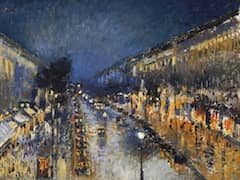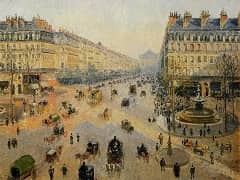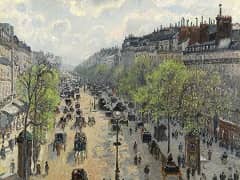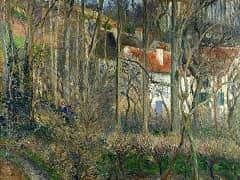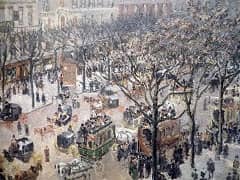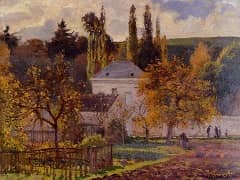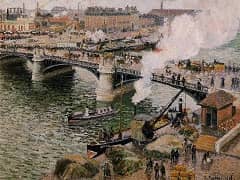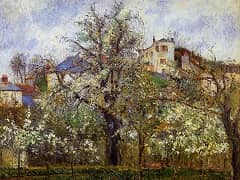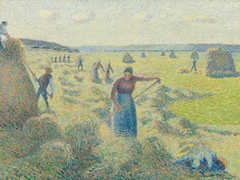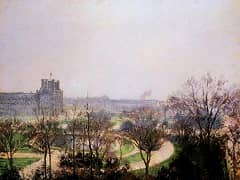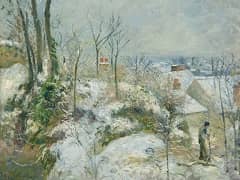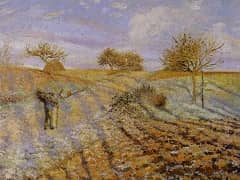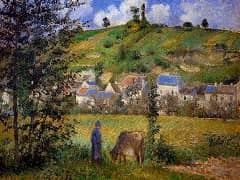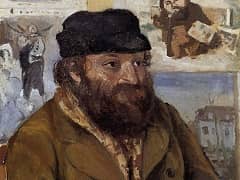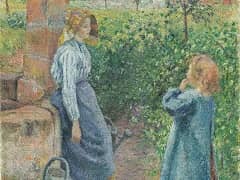The Red Roofs, a Corner of a Village, Winter Effect, 1877 by Camille Pissarro
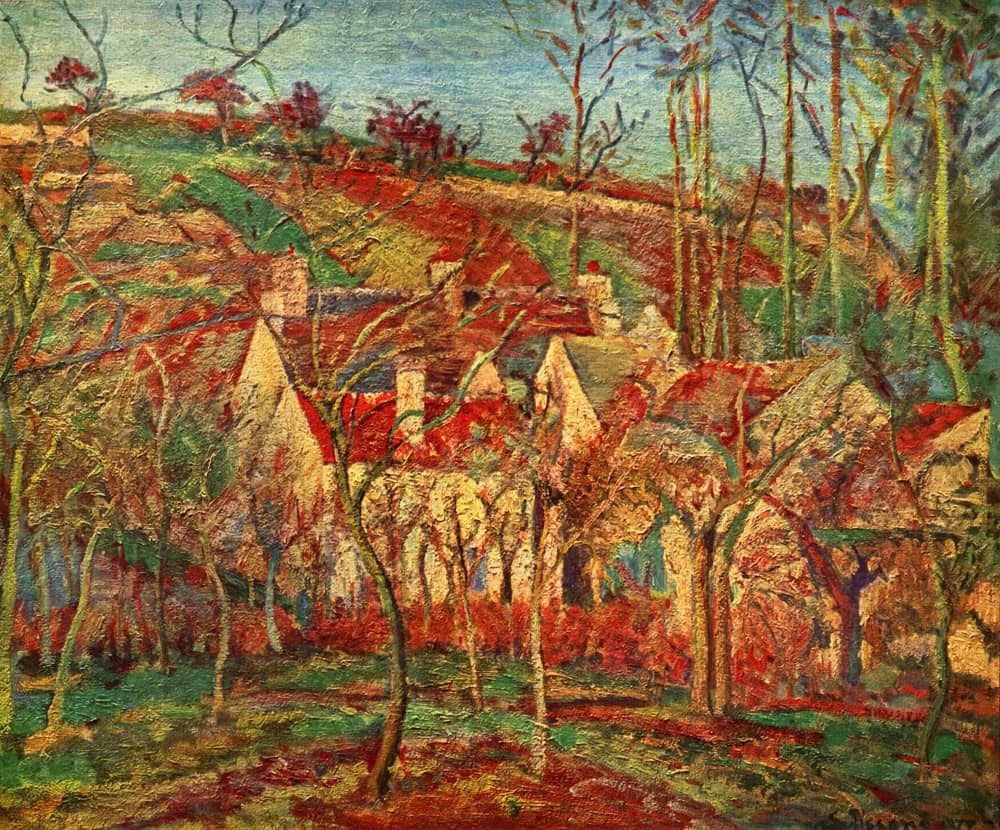
One of the earmarks of an Impressionist artist is that he painted in the open air. Instead of making a sketch or drawing of his subject and then working from memory back in his studio, he would set out into the countryside
armed with an easel and canvas. Pissarro was a great supporter of this method and encouraged the younger artists to do the same. In 1877, however, he appears to have developed a technique of painting small oil sketches
en plein air which he used as a basis for larger paintings. He considered the smaller compositions to be finished works of art, but they nevertheless served as a catalyst to create on a much larger scale.
The Red Roofs, Corner of a Village, Winter Effect is a relatively small canvas, compared to Cote des Boeufs at L'Hermitage near Pontoise, which measures
114.9x87.6 cm. It is possible that the latter is an extension of the former.
In this painting we see a small cluster of houses through the trees of an orchard. The buildings appear to be the subject of the painting, but the cobweb of trunks and branches stops the eye from resting on them for a
second at a time. They physically block our view. Rather than being able clearly to look through and see the houses, our eye skids across the surface of the composition.
To paint Cote des Boeufs at L'Hermitage near Pontoise, Pissarro has moved slightly up the hill and to the left. We can see that the building with the large
brown roof and the small cream house in front of it have moved diagonally down the composition to the right, so that we see them from a slightly different angle. Here again, Pissarro has studied the myriad pattern of trees
on the surface of the picture. The twisting branches in the foreground, and the vertical trunks in the middle distance and background, distract our eyes from the figures slowly walking through the undergrowth on the
lefthand side.

